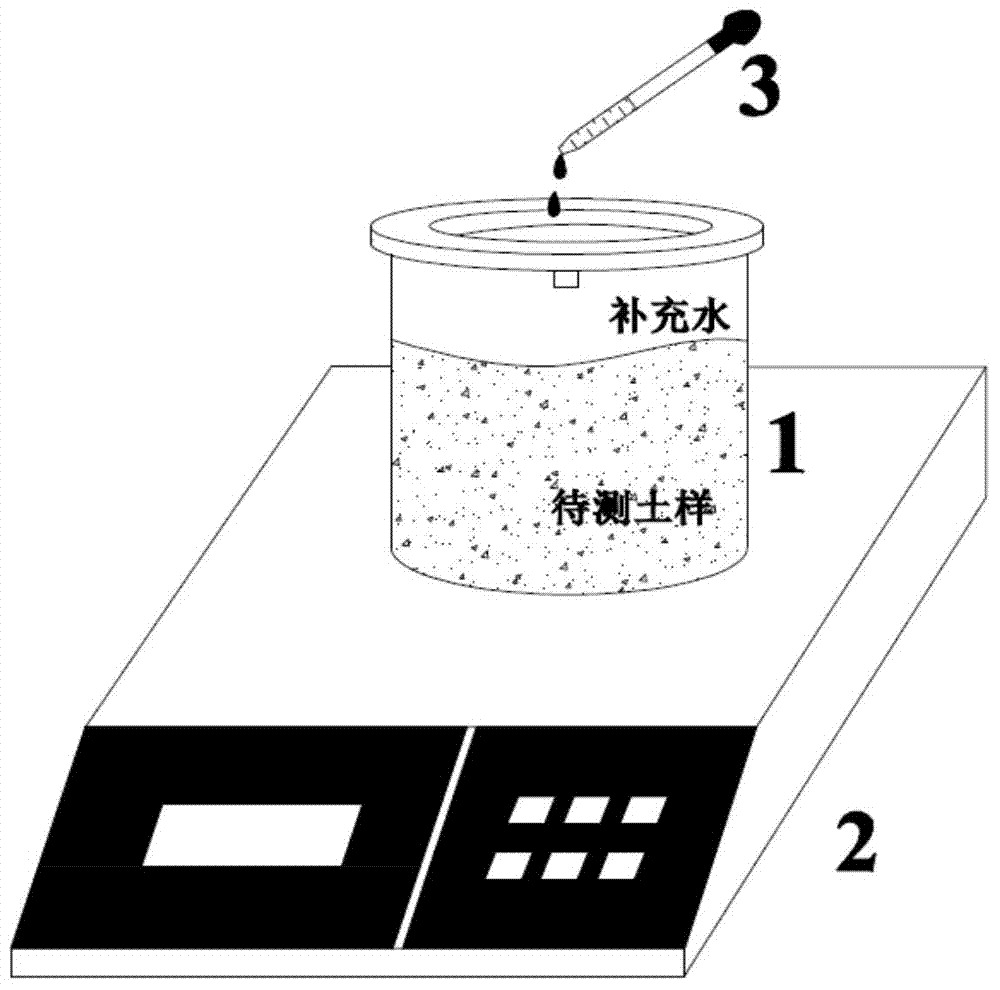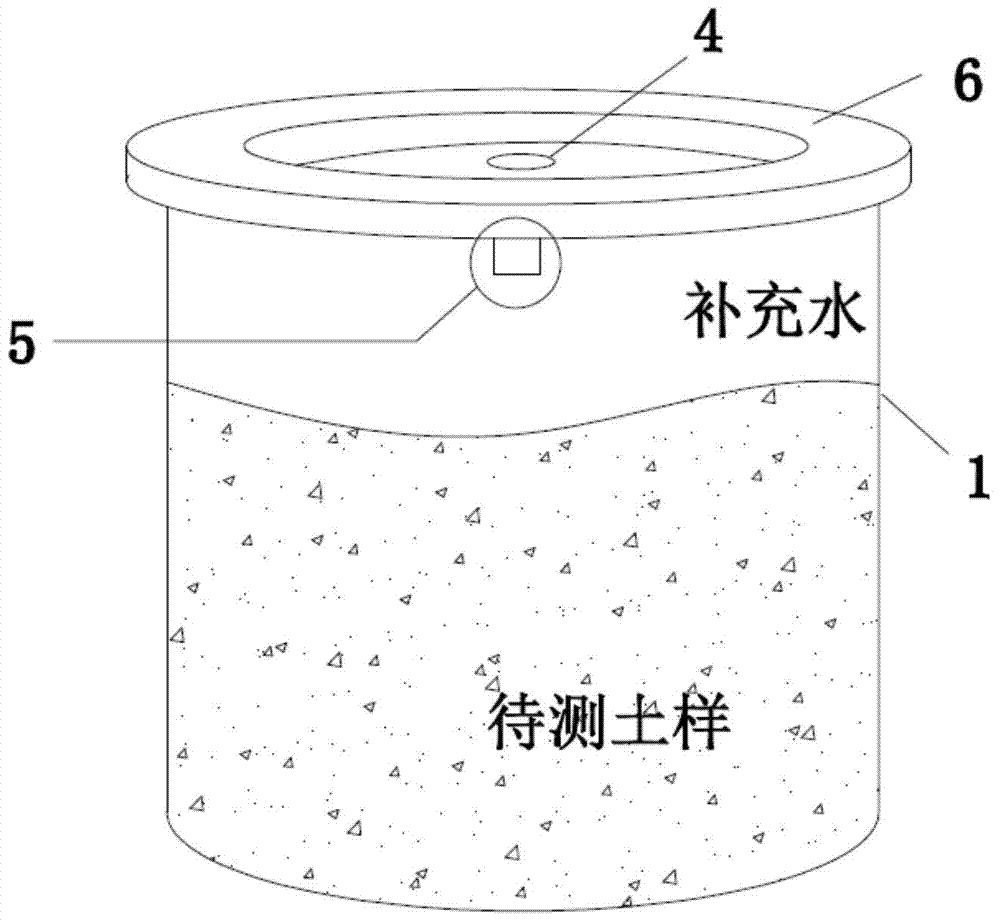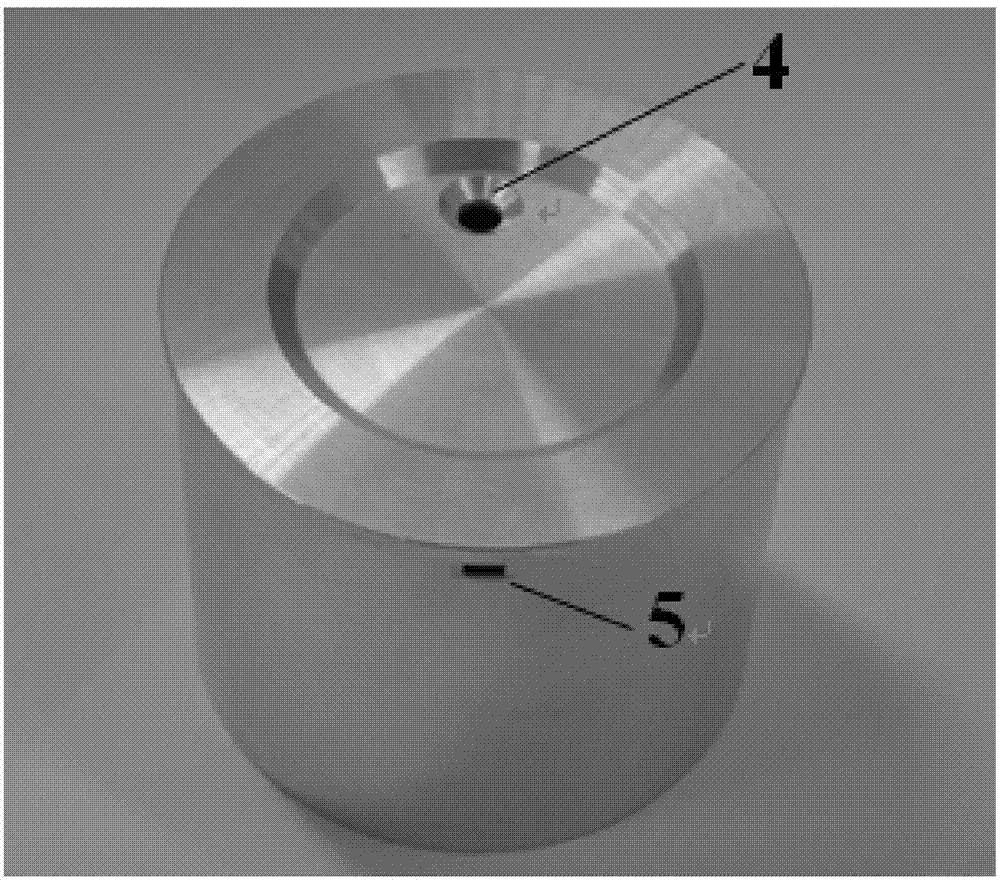Volume substitution method for measuring soil grain density and equipment
A soil particle and volume technology, applied in the field of soil science, can solve the problems of complicated operation and limited measurement range, and achieve the effect of simple operation process, good equipment stability and good application prospect.
- Summary
- Abstract
- Description
- Claims
- Application Information
AI Technical Summary
Problems solved by technology
Method used
Image
Examples
Embodiment 1
[0051] Embodiment 1 The present invention measures the equipment used in the volume replacement method of soil particle density
[0052] The structure diagram of the equipment used in the volume replacement method for measuring soil particle density in the present invention is as follows figure 1 As shown, it includes constant volume container 1, weighing equipment electronic balance 2 (Shanghai Zhuojing Electronic Technology Co., Ltd., model: BSM-5200.2), water injection equipment rubber tip dropper 3 (common glass plastic tip dropper commonly used in laboratories ), the drying equipment is a drying box (Sino-foreign joint venture Chongqing Sida Experimental Instrument Co., Ltd., model: CS101-1E) (not shown in the figure).
[0053] Among them, the structural diagram of the constant volume container 1 (including the constant volume container and the liquid level positioning cover removed from the liquid level positioning cover) is as follows figure 2 As shown in the real pho...
Embodiment 2
[0054] Example 2 Volume displacement method for measuring soil particle density—wet soil method
[0055] For the equipment used, see Example 1.
[0056]The soils used are four kinds of soil materials, which are clay loess collected from Yangling, Shaanxi, silt loam in Beijing, black soil in Jilin and clay red soil in Jiangxi (hereinafter referred to as T1, T2, T3, T4 respectively), in order to test the effect of this method on Measurement accuracy in different soils. T1, T2, T3, and T4 are prefabricated into five design moisture contents: 10%, 15%, 20%, 25%, and 30%. Repeat the measurement 3 to 4 times.
[0057] The determination method is as follows:
[0058] Put the soil sample to be tested into a constant volume container with a volume of V0 and a mass of M0, and record the weight as M1; fill water into the constant volume container with the soil sample to be tested, stop water injection when the liquid level is close to the mouth of the constant volume container, and co...
Embodiment 3
[0068] Example 3 Volume displacement method for measuring soil particle density——dry soil method
[0069] For the equipment used, see Example 1.
[0070] The soils used are four kinds of soil materials, which are clay loess collected from Yangling, Shaanxi, silt loam in Beijing, black soil in Jilin and clay red soil in Jiangxi (hereinafter referred to as T1, T2, T3, T4 respectively), in order to test the effect of this method on Measurement accuracy in different soils. T1, T2, T3, and T4 are prefabricated into five design moisture contents: 10%, 15%, 20%, 25%, and 30%. Repeat the measurement 3 to 4 times.
[0071] The determination method is as follows:
[0072] Put the soil sample to be tested into a constant volume container with a volume of V0 and a mass of M0 for drying, and record the weight as M3; slowly pour water into the constant volume container containing the dried soil, and stop water injection when the liquid level is close to the mouth of the constant volume c...
PUM
| Property | Measurement | Unit |
|---|---|---|
| The inside diameter of | aaaaa | aaaaa |
| Outer diameter | aaaaa | aaaaa |
| Wall thickness | aaaaa | aaaaa |
Abstract
Description
Claims
Application Information
 Login to View More
Login to View More - R&D
- Intellectual Property
- Life Sciences
- Materials
- Tech Scout
- Unparalleled Data Quality
- Higher Quality Content
- 60% Fewer Hallucinations
Browse by: Latest US Patents, China's latest patents, Technical Efficacy Thesaurus, Application Domain, Technology Topic, Popular Technical Reports.
© 2025 PatSnap. All rights reserved.Legal|Privacy policy|Modern Slavery Act Transparency Statement|Sitemap|About US| Contact US: help@patsnap.com



